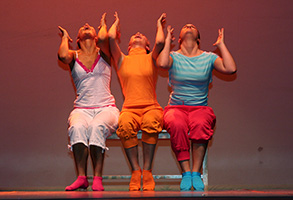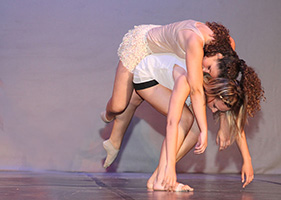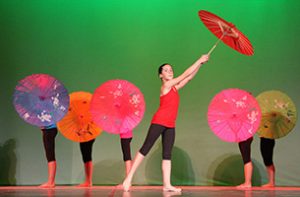Contemporary Dance Classes

We offer Contemporary Dance courses for both amateur and professional levels.
Contemporary Dance is the youngest of the technical disciplines and has its origins at the end of the 19th century. In the beginning an alternative to the strict technique of classical ballet was sought and dancers began to appear dancing barefoot and making less rigid jumps than the traditional ones on stage.
It arises as a need to express oneself more freely through the body.
This discipline allows, in spite of the control, a greater relaxation in the movements guided basically through impulses and with what they pretend to demonstrate feelings and emotions.
During Contemporary Dance classes, it is put into practice:
- Connection between the mind and the body: an internal dialogue that develops physical emotions to encompass knowledge of the functioning in our body.
- Alignment of the body in the space guided by all the extremities, the spine and the control of the pelvic area of our body.
- Evaluation of how we transport our weight in movement while being on and off our axis.
- The knowledge of how our body is physically connected in its interior and how that knowledge is communicated externally.
Registration Course 2025-2026, sign up now!
In our school we study these Contemporary Dance techniques: Cunningham, Graham and Release.
Cunningham
The Cunnigham technique is based on flexibility, controlled force, constant use of different speeds, clarity of movement, a physical and mental development with foot management (in his own words), back work in front and feet the classic positions using combinations.
Graham

The Graham technique of modern dance is one of the main methods in modern dance.
This technique, developed by the great pioneer of modern dance, Martha Graham, is the only modern dance technique that has a coded language to express the full range of human emotions.
The Graham technique is based on the principles of contraction and relaxation. Graham focuses on releasing emotions through pelvic and abdominal contractions, relaxation on inspiration, muscle spasms, stretches and pulls.
In the Graham technique, the torso is the central axis in the expression of emotions. The contractions begin in the pelvis. The arms, hands and legs are used to create images and to move in space.
The breathing plays a primordial role. All contractions and relaxations in the Graham technique are coordinated with breathing. The contraction is done in the exhalation and the relaxation is done in the inhalation.
The relationship with the floor also becomes important. The movements in Graham technique are rooted in the ground, fall to the ground, they impulse from the ground to jump or shake against the ground.
Release

The release technique emphasizes the release of muscle tension when performing movements. The purpose is to achieve an efficient use of energy and anatomy so that movements are made with minimal effort.
The Release Technique includes the following principles:
- The body is seen as an integrated entity where there is no separation between body, mind, emotions and soul. The personal kinetic experience is emphasized.
- It is recognized that each person has a unique way of moving with their own intentions.
- The potential of human anatomy is explored.
- When executing a movement, the nervous system is equally important as the musculoskeletal system.
- A body alignment that supports the weight of the body from the center of the bones is practiced. With this alignment the movements begin with the muscles closest to the center of the body.
- Stillness is always the starting point and the end point. This stillness is a position called Constructive Rest.
- Visualization is used to awaken new kinetic experiences and create awareness about these new possibilities. Visualization consists of imagining metaphors of physical actions to initiate and make a movement.
- The movement patterns of the different stages of human development are explored, such as the fetal position, crawling or standing up.
- Importance of the creative process and improvisation.
What makes us unique
50 years of excellence in Dance
Our extensive experience places us among the best dance centers in Spain.
First class facilities
4 schools, more than 2000 m2, and a wide variety of options for your dance training.
Close and personalized attention
We are a big family, combining personalized attention with the infrastructure of an elite center.
Courses taught in our schools in Valencia:
- Ballet Classes
- Flamenco Classes
- Contemporary Classes
- Funky Classes
- Ballroom Dance Classes
- Sevillanas Classes
- Tap Dance Classes



